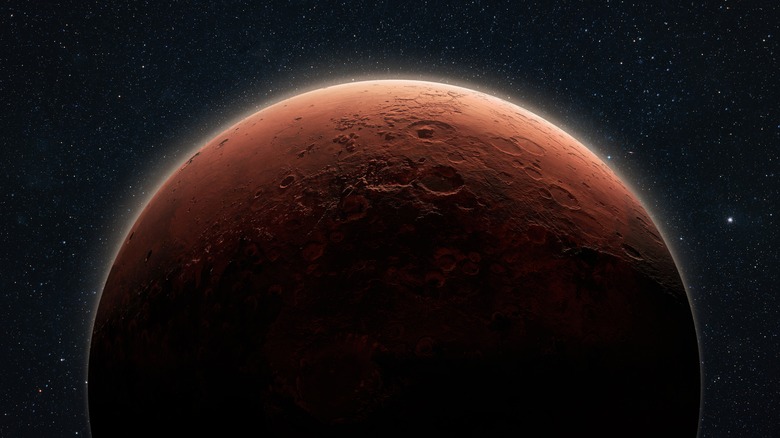Was There Ever Life On Mars? Here's How AI Might Help Us Finally Find The Answer
Searching for life beyond Earth is no simple task. While we can make certain assumptions about what kinds of life might be out there — that it would probably be carbon based, like us, and would also need liquid water like most life on Earth does — that's still a very small needle to search for in the very large haystack of the universe. Recently, researchers from the SETI (Search for Extraterrestrial Intelligence) Institute have proposed a method for making use of machine learning to help in the search for life on other planets.
The research, which is published in the journal Nature Astronomy, describes a method for searching for biosignatures. These are indications that life exists on a planet, such as particular chemicals, which are only created by life as far as we know. But detecting these biosignatures is complicated because some of them can also be created by non-organic processes.
For example, the presence of methane in a planet's atmosphere could be considered to be a biosignature, as it is often a by-product of life. However, methane has also been detected on Mars, where it is thought to be the result of geological processes, not biological ones — meaning it comes from rocks, not life. But while there almost certainly isn't life on Mars now, there could have been at some point in the planet's history, and it's hard to detect clues about this from rock samples.
To help unpackage the complex factors that go into detecting life from a distance, the new research looked at life as it exists in remote places on Earth to get clues for what we should be searching for on other planets.
Machine learning for biosignature detection
The new research uses information from life found in inhospitable locations on Earth like the salt formations in Salar de Pajonales, a salt flat region in the Atacama desert in Chile. The researchers mapped life found here, then trained a machine learning model on the distribution of life across the region to help it recognize locations for potential life to be found at other locations.
This machine learning model helped identify biosignature more precisely, meaning only a smaller area had to be searched.
"Our framework allows us to combine the power of statistical ecology with machine learning to discover and predict the patterns and rules by which nature survives and distributes itself in the harshest landscapes on Earth," said lead researcher Kim Warren-Rhodes of the SETI Institute. "We hope other astrobiology teams adapt our approach to mapping other habitable environments and biosignatures."
The long-term plan for this kind of research is that it could be used by scientists who are planning missions on other planets like Mars, to help them narrow down the areas in which they should be searching. It could use data collected by orbiters which take images of a planet's surface, then select likely locations from that data — and that could help uncover indications if there was in fact life on Mars millions of years ago.
"With these models, we can design tailor-made roadmaps and algorithms to guide rovers to places with the highest probability of harboring past or present life—no matter how hidden or rare," Warren-Rhodes said.
